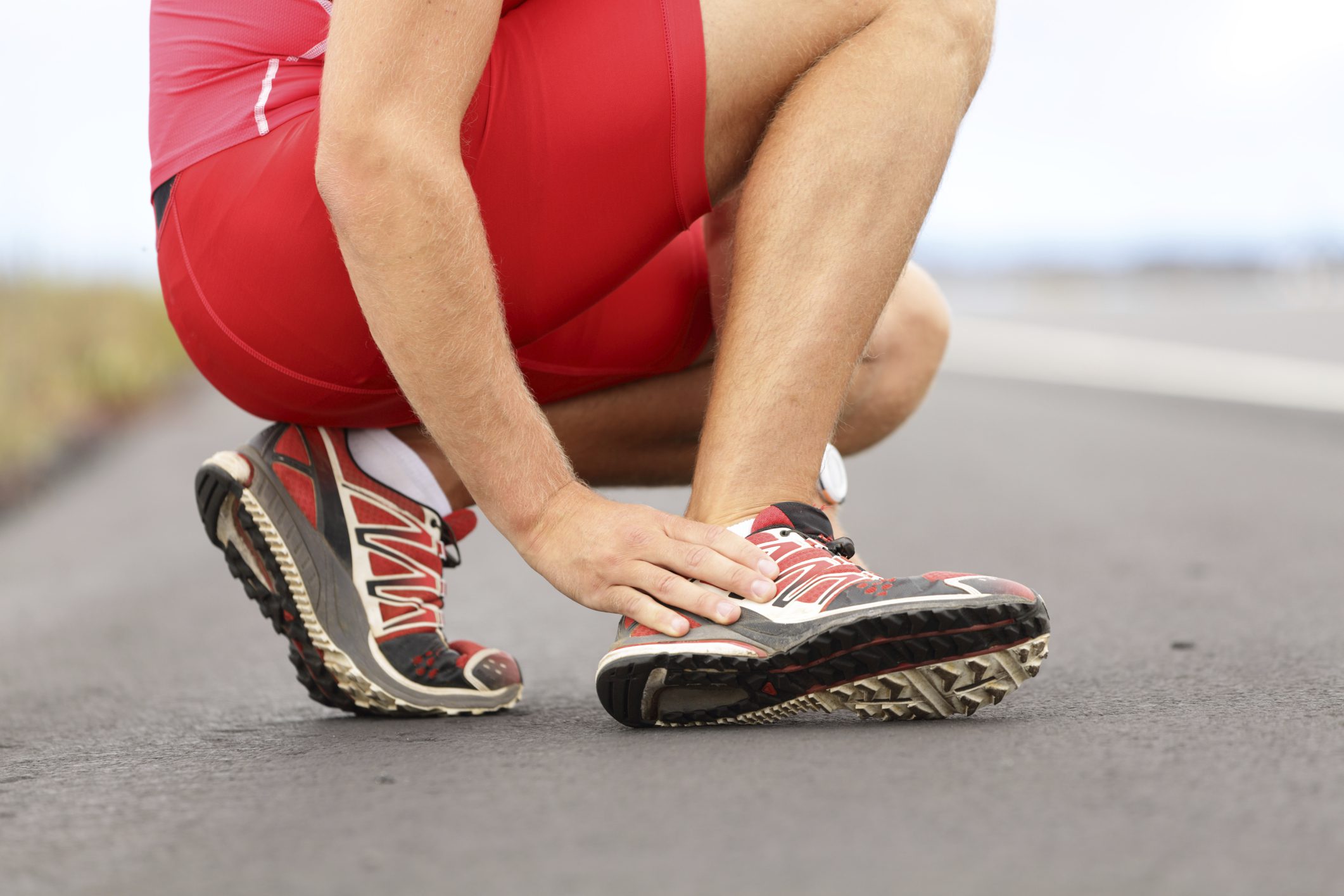How to recover from ankle injury

 Blaise Dubois is no stranger to trail running – and he’s no stranger to injury either. The Quebec City physiotherapist was running on the trails behind his house when he fell and suffered a serious ankle sprain. Luckily, Dubois treats clients for traumatic injuries and knew exactly what to do. He treated the injury, then slowly worked his way back to running, and is now running as well as ever before. The thing about a traumatic injury, like a broken leg or a sprained ankle, is that unlike overuse injuries, there’s not a lot you can do to prevent an accident. But just because you’ve suffered a serious injury, it doesn’t mean you have to wallow on the couch for months. There are plenty of things you can do to speed up recovery and return to running in a safe and healthy way.
Blaise Dubois is no stranger to trail running – and he’s no stranger to injury either. The Quebec City physiotherapist was running on the trails behind his house when he fell and suffered a serious ankle sprain. Luckily, Dubois treats clients for traumatic injuries and knew exactly what to do. He treated the injury, then slowly worked his way back to running, and is now running as well as ever before. The thing about a traumatic injury, like a broken leg or a sprained ankle, is that unlike overuse injuries, there’s not a lot you can do to prevent an accident. But just because you’ve suffered a serious injury, it doesn’t mean you have to wallow on the couch for months. There are plenty of things you can do to speed up recovery and return to running in a safe and healthy way.
First Aid
For the first few days (or weeks, depending on your injury), your primary objective is to treat and protect the injury. “The first step to treating any traumatic injury is to protect the structure,” Dubois says. That means getting it looked at right away to determine the extent of the injury, followed by rest, ice (if recommended) and elevation. Depending on the extent of the injury, you may also wind up in a cast or on crutches for a period of three to six weeks – or even longer.
Maintain Aerobic Fitness
You don’t have to spend recovery time completely inactive, says Dr. Reed Ferber, director of Calgary’s Running Injury Clinic. While you need to heed your doctor’s advice about treatment, you still want to get active as soon as possible. It will make you feel better mentally and you’ll maintain some cardiovascular fitness and strength. Some workout options include pool running (if you don’t have a cast), indoor cycling (either with only one foot or both feet, if you are allowed to bear some weight on the limb) or an upper body ergometer, which is like a hand bicycle for the upper body. A sports injury specialist can also show you some good strength exercises, which can help reduce muscle atrophy. A recent University of Virginia study found that exercising a non-casted limb with weights can actually reduce atrophy on the casted limb as well.
Ease Back
Once the cast or tensor bandage comes off and you’re given the all-clear to bear weight on the limb, don’t start out with an aggressive 5k or 10k run. In fact, you shouldn’t run at all. “If there’s any chance you are limping, you can’t run,” says Andrea Reid, a physiotherapist at Vancouver’s Allan McGavin Sports Medicine and Physiotherapy Centre. “One rule of thumb is that you have to be able to hop on the bad side 20 times in a row before you should even think about running.”
Instead, most sports injury therapists recommend you begin by walking and then move to a walk-run program. The Canadian Academy of Sports Medicine recommends a five-week return-to-running program that starts with walking only, then gradually adding 30-second running intervals until you can run for a 30 minutes straight. It’s also very important to ensure you don’t experience any pain, both during and after running, Ferber says.
Don’t be in a rush to up your mileage, adds Dr. Todd Bentley, an associate clinical professor of medicine at McMaster University in Hamilton, Ont. Take your time, or you will risk re-injuring yourself or, even worse, developing a chronic injury. “If you don’t give enough time to do the appropriate rehab, you run the risk of having a very prolonged hiatus from your activity,” he says.
– Alison Dunn


